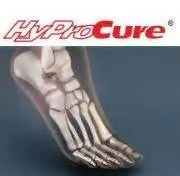Causes, Symptoms, and Treatment for a Broken Foot
One out of ten broken bones is reported in the feet. When an object crushes, bends, or stretches the bone beyond acceptable ranges, bones break. A break in the foot is either a fracture or a straight break.
The location of any break can tell you how the break happened. Toes, for instance, break typically as a result of something being kicked hard and with great force. Heel breaks almost always are as a result of an improper landing from great height. Twists or sprains are the other two frequent occurrences, and as with all usual breaks, result from unexpected accident or sudden injury. As with stress fractures, breaks form as a process over time—repeated stress on already present cracks. Runners, dancers, and gymnasts are the usual athletes who receive this type of break—stress fractures occur from incredible pressure on the feet. It is no surprise these athletes bear the majority of reported fractures.
Pain, swelling, bruising, and redness are all indicative of the typical symptoms from a broken foot. Severe pain—to the point of not being able to walk—usually depends on the location of the break in the foot. Toes are on the lower scale of pain threshold, but heels are high—as are a few other particular bones. As the severity of the broken foot increases, symptoms like blueness, numbness, misshaping of the foot, cuts, or deformities will crop up and indicate the requirements of a medical professional with access to an x-ray facility.
Prior to this severe point however, reduction of pain and swelling at home should be the first priority. Elevate and stabilize the foot, don’t move it. Immobilization of the foot is the next priority, so jury-rigging a homemade splint is acceptable. Keep in mind while creating a splint, any increase of pain or cutting off blood circulation means that the splint should be removed immediately. Use ice to decrease swelling and alleviate pain symptoms.
When dealing with a medical center, the patient should note that the treatment will be different from what is stated dependent on which foot bone has been fractured and the cause of the break. Crutches, splits, or casts are common treatments while surgery has been known to be used in more severe cases in order to repair the break in the bone or bones.
Every Day Foot Care
Our feet are of great importance in our lives. However, they are something we tend to neglect. When this becomes a habit, it can cause significant trouble. Pain, limited mobility, and expensive doctor’s visits can occur when foot problems are ignored. If feet are cared for and looked after each day, however, they will perform without pain or complication.
Hygiene is the most basic way to care for your feet. Washing and drying them thoroughly every day is most important. Cleaning between your toes, and keeping your toenails trimmed and short is essential. Using moisturizer is also important if your feet feel dry or appear cracked.
Remember to avoid using moisturizer between your toes. This can cause fungi and bacteria development if cream sits in that area. The skin can also macerate between the toes when moisturizer is used.
Footwear is also an important aspect of keeping your feet healthy. Making sure your shoes are the correct size is key when picking them out. Shoes should not feel too tight, but snug. If a shoe is too loose, they can also cause problems. Shoe shopping is recommended to be done later in the day, because the feet will have settled and swelled to their full size by then. Wearing high-heels or flip-flops too often should be avoided to keep their feet healthiest. Wearing shoes that are good for your feet, have padding on your soles, and support the ankles and arches are most important.
Additionally, socks should be worn when closed-toe shoes are worn. Though they may feel hot during the summer, they are important in absorbing sweat and moisture off the feet. Without socks, the buildup of sweat in a closed-toe shoe can cause fungi and athlete’s foot.
The right shoes can make a difference in your everyday foot care. Make sure that your shoes show no signs of wear, and chose shoes that offer support for your arches and overall foot. Make sure cleaning your feet is a part of your daily routine. This way, your feet will stay healthy and safe.
Biomechanics in Podiatry
Biomechanics and its related study deal with forces that act against the body and effect things like our movement. In podiatry, biomechanics are studied to determine the movement of the ankle, toes, and the foot itself, as well as the forces that impact them. Podiatrists who train in this specialty are able to effectively diagnose and treat conditions that affect people’s everyday movement.
Regardless of your lifestyle, age, or any other factors, many people experience foot problems throughout their lives. Twists and turns, improper balance, and added weight are just a few of the things that can add stress to the feet and limit the mobility everyone takes for granted. Pain in the feet and ankles can also trickle up towards the lower legs, knees, hip, and even back area, all effecting the way you move around on a daily basis.
The history of studying biomechanics dates back to ancient Egypt at around 3000 B.C., where evidence of professional foot care has been recorded. Throughout the centuries, advances in technology, science, and an understanding of the human body led to more accurate diagnosis of conditions such as corns for example. In 1974, biomechanics garnered a large audience when Merton Root claimed that changing or controlling the forces between the ankle and the foot, corrections of certain conditions could be implemented to gain strength and coordination in the area. Due to his research, we still use his basic principle of thermoplastic foot orthotics to this day.
As technology has improved, so have the therapeutic processes that allow us to correct deficiencies in our natural biomechanics. Computers can now provide accurate readings of the forces, movements, and patterns of the foot and lower leg. Critical treatment options can be provided to patients now who suffer from problems that cause their biomechanics to not function naturally. The best results are now possible thanks to 3D modeling and computing technologies that can not only take readings, but also map out what treatment will do to the affected areas.
These advanced corrective methods were able to come to light thanks to an increase in both the technologies surrounding biomechanics and also the knowledge of how they work naturally. For example, shoe orthotics is able to treat walking inabilities by realigning the posture deviations in patients caused by hip or back problems. Understanding foot biomechanics can help improve movement and eliminate pain, stopping further stress to the foot, so speaking with your podiatrist if you have any of these problems is highly recommended.
Athlete’s Foot
Athlete’s foot is an extremely contagious infection caused by a fungus that results in itching, burning, dry, and flaking feet. The fungus that causes athletes foot is known as tinea pedis and thrives in moist, dark areas such as shower floors, gyms, socks and shoes, commons areas, public changing areas, bathrooms, dormitory style houses, locker rooms, and public swimming pools. Athlete’s foot is difficult to treat as well because of the highly contagious and recurrent nature of the fungus.
Tinea is the same fungus that causes ringworm, and is spread by direct contact with an infected body part, contaminated clothing, or by touching other objects and body parts that have been exposed to the fungus. Because the feet are an ideal place for tinea to grow, thrive, and spread, this is the most commonly affected area, but it is known to grow in other places. However, for obvious reasons, the term athlete’s foot describes tinea that grows strictly on the feet.
The most commonly infected body parts are the hands, groin, and scalp, as well as obviously the feet. Around 70% of the population suffer from tinea infections at some point in their lives, however not all of these cases are athlete’s foot. Just like any other ailment, some people are more likely to get it than others, such as people with a history of tinea infections or other skin infections, both recurring and non-recurring ones. On top of this, the extent to which a person experiences regrowth and recurrent tinea infections varies from person to person.
Sometimes people will not even know that they are infected with tinea or that they have athlete’s foot because of a lack of symptoms. However, most experience mild to moderate flaking, itching, redness, and burning. However, some of the more severe symptoms include cracking and bleeding skin, intense itching and burning, pain while walking or standing, and even blistering.
Because of the recurring nature of the tinea fungus and the athlete’s foot it causes, the best way to treat this condition is with prevention. While it is hard to completely avoid, you can take some preventative measures such as wearing flip flops or sandals in locker rooms and public showers to reduce contact with the floor. It also helps to keep clean, dry feet while allowing them to breathe. Using powders to keep your feet dry is a good idea, as well as keeping your feet exposed to light and cool air, as these are not desirable conditions for tinea to grow. If you do happen to get athlete’s foot, treating it with topical medicated creams, ointments or sprays will not only help eliminate it but also prevent it from coming back.













